It’s been many years since I first heard of an innovation to prevent striker movement in one of the most popular striker-fired pistol platforms in history, the GLOCK. The first I heard of it was from Todd Lewis Green. Along with Tom Jones, he developed the concept and they moved into a long, methodical beta testing of the device before any examples were offered for sale.
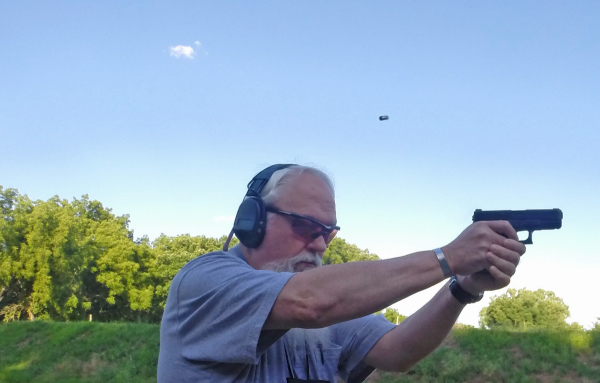
Tau Development Group Striker Control Device
The idea was simple. The well-trained protocol for safe holstering of a handgun involved placing the thumb of the shooting hand over the hammer of the pistol or revolver. This could be done in such a way to prevent hammer travel if something snagged the trigger during the reholstering process. I’ve known the 1911-types to place the shooting thumb under the thumb safety for the same reason; with the safety on, the trigger can’t trip the sear and the slide can’t be pushed back out of battery when being forced into a tight holster.
I’d done a bit different with the Browning design, preferring to bring the thumb up between hammer and slide. This prevented hammer fall but also activated the grip safety. Doing this protocol works on various hammer-fired guns. What do we do about striker-fired guns?
The “gadget” as Todd had referred to it was far simpler than the various safety elements of hammer-fired guns; so simple that the original pistol’s designers had to have kicked themselves when they saw how easy it is. It replaces the OEM striker cover plate, that piece that keeps the striker in the slide, as well as provides pressure to the extractor depressor plunger via the spring loaded bearing.
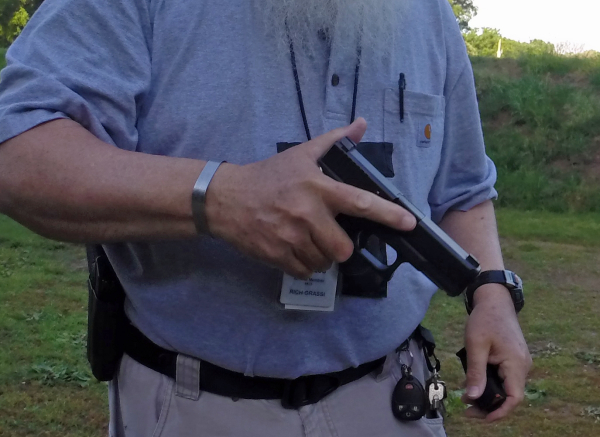
Officially referred to as the “striker control device,” the gadget simply blocks movement of the striker rearward – required to get the requisite distance before getting enough tension and distance to be released – preventing firing.
It’s not a ‘safety’ as such; it simply prevents firing of the gun if pressure is placed on the back of the slide. One still needs to mind the muzzle and stay clear of the trigger. The SCD is a passive device. In normal operation, it does nothing.
As these things have been installed on a range of GLOCKs over a number of years and some have many thousands of rounds on them, I Installed the SCD on three guns that are the most likely carried GLOCK pistols available to me: a Gen5 G19 that was from the rollout of the line nearly three years ago (August, 2017), a GLOCK 43 and the newest, a G43X.
There is the version available for Gen5 (which also includes the 19X, 17M, 19M, and G45), Gen1-4 (models 17–41), Slimline 9mm (43, 43X, 48), and G42. It’s designed to work with OEM GLOCK triggers and aftermarket trigger components that do not alter pre-travel compared to the stock trigger – don’t install the Striker Control Device on any gun with aftermarket triggers that reduce pre-travel.
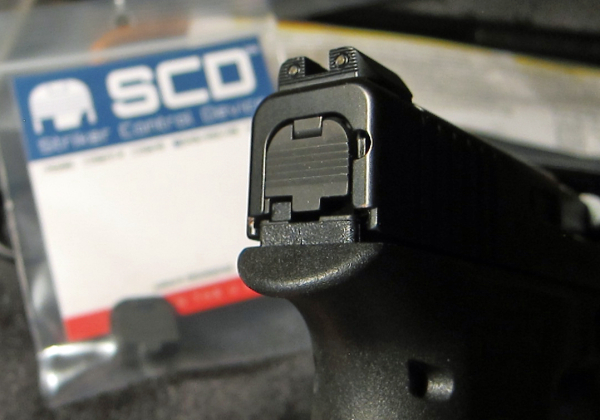
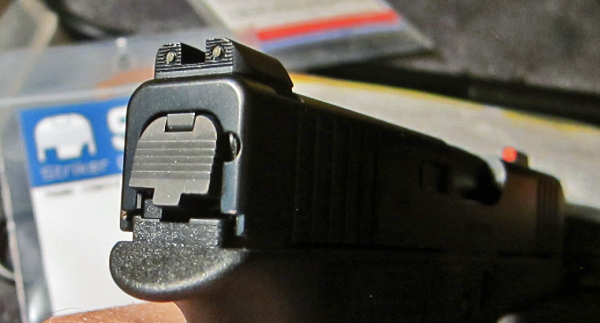
As I’ve been through GLOCK armorer training a number of times – though sadly not recently – I found it no trouble to get the SCD installed on the three guns. It’s not a chore, just something you may want a GLOCK armorer to install. Last month, I took the guns to the range after having installed the Striker Control Devices.
Using the ‘brand new to me’ GLOCK 43X, I started out on the “Dirty Bird Silhouette” from Birchwood Casey, a target reminiscent of the ISU target with the ISU (and the NRA B-27) scoring rings. I held on the upper 1/3 of the target from fifty yards. It was zero for elevation, but tended left with a pair of hits on the cardboard backer, and one round nicking the edge of the target. At fifteen yards, I corrected my grip and put four inside the red “10” ring, with one in the “9” at the right side.
The Gen5 G19 with assorted hollow-point ammo tended high and a little right. The G43 at the same distance tended high with the assorted ammo. None of the dispersion from point of aim to point of impact involved the SCD; in fact, except for movement of the slide cover plate when I pressed the trigger, it was completely transparent. Nothing had changed – until I went to holster. Even then, using the protocol I’ve used since the S&W M645 was first issued to us in 1986, I noticed no difference.
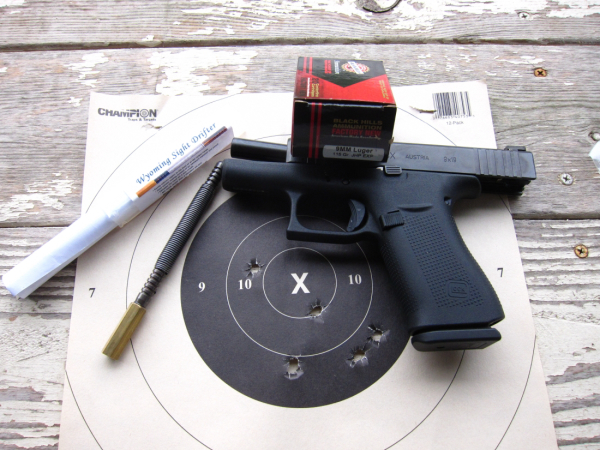
The next day, I took the G43X to the retiree LEOSA range for my former agency. Using Winchester 147gr FMJ ammo, I shot 100% with some low hits at 25 yards. The instructor asked “what’s happening with your slide cover plate?” I explained the device to him.
Before readying the two newer guns for carry, I took them out to confirm function and zero. Using CCI Blazer 124 gr. TMJ ammo in the Gen5 G19, I shot five rounds at fifty yards on a target which is a size analog for the NRA TQ-15. The more-or-less 8 ½” x 11” preferred scoring zone held four of the five. One was a bad miss; I’d called it, realized I was shooting unlocked. It went over the silhouette’s left shoulder (my right). Using 65 gr. RNP Inceptor “Sport Utility Ammo” in the G43X, I printed off to the left with one miss off paper, 1 on paper outside the silhouette at 8 o’clock, a line cutter at 9 o’clock and two hits in the main scoring zone.
Using the “Wyoming Sight Drifter” obtained from Skinner Sights, I made a ‘factory adjustment’ and tried a ten yard B-8 bullseye. The sights put Black Hills 115 grain JHP EXP rounds inside the bull. After cleaning and oiling, the pair of guns were ready for duty.
I’ve changed nothing in my gun handling and now I don’t notice movement of the Striker Control Device as I shoot. The Gadget simply works within the gun handling protocols I’ve used for decades. I didn’t have to have it; I find it comforting to have it installed.
The SCD is CNC machined from 17-4PH stainless steel, has a black oxide finish, and is made in the United States. This additional layer of safety is well worth the effort.
- - Rich Grassi